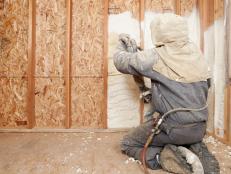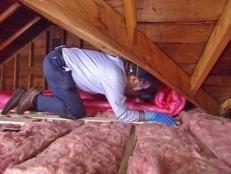Cellulose Insulation
Just like you wouldn't leave your coat unzipped on a blustery, cold day, you also need to ensure that there aren't any gaps in a home's insulation. Gaps can create pathways for conditioned (heated or cooled) air to leak out and unconditioned air to leak in, sacrificing the homeowner's comfort. However, many common insulating products are difficult to install without gaps, especially in irregularly sized spaces. You can identify some of these gaps by conducting an energy audit.
One good option is cellulose insulation, which is made from recycled paper such as used newspapers and boxes. Because cellulose insulation is produced using recycled waste materials, it's a good option for environmentally conscious consumers.
Cellulose insulation is considered a loose-fill type of insulation. Loose-fill insulations are produced as — or broken down into — shreds, granules, or nodules. These small particles form fluffy materials that conform to the spaces in which they are installed. Loose-fill insulations are well suited for places where it's difficult to install other types of insulation, such as around obstructions (like plumbing stacks) and in hard-to-reach places. They can be installed in either enclosed cavities such as walls or unenclosed spaces such as attics.
Cellulose insulation is sold in bags. To apply it, the insulation is poured from the bag and into a hopper, a machine that breaks it up into small cellulose particles that are then blown through a hose and into cavities. There are two installation methods:
1) Dry blown cellulose requires a netting to be attached to the exposed surface that catches the cellulose and holds it in place. This method can be done by a do-it- yourself-er, and it just requires a basic hopper.
2) Wet cell spray cellulose is mixed with a bonding agent and sprayed into the cavity where it sticks to the walls without the netting required for dry blown cellulose. The wet cell spray is typically oversprayed and the excess is shaved off once it has dried. This method is used to install in vertical wall cavities and requires a contractor that has special equipment.
Note that many loose-fill insulations installed in attic cavities will lose some of their installed R-value over time because of settling. The Department of Energy (DOE) suggests installing about 20 percent more blown-in cellulose insulation to offset this settling. For more information on settling, including specific installation guidelines, visit DOE's "Energy Savers" website.
Cellulose insulation costs more than fiberglass insulation, but it can save homeowners 20 percent to 50 percent on their utility bills if installed according to the DOE's R-value recommendations. In addition to contributing to energy efficiency, properly installed cellulose insulation is fire resistant, fills irregular and hard-to-reach places well, and is a good choice for consumers interested in environmentally friendly products.








































